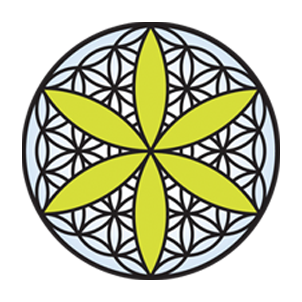





Energy must move freely throughout all nature.Every organism thrives when energy is moving within its body, driving metabolism, catabolism, hormone synthesis, cellular generation and phagocytosis, circulation, etc. The myriad of inter-dependent body functions is driven by an energy the Chinese simply call Chi.
Chi is essentially sunlight. Chi is captured in cells of living organisms and drives the formation of single-celled and differentiated bodies. Chi is the driver of life and its evolution.
The Chinese Masters of olden times observed this vital flow and recognized that all health deficiencies arise when Chi is blocked or stalled in its free flowing movement. When this occurs, “Chi Stagnation” follows, and can form the basis of all diseases. Examples are atherosclerosis, cirrhosis and diverticulitis. In women, endometriosis, menstrual cramping and other blood-cycle irregularities, cysts and masses, hormone imbalances and bone degeneration can result from Chi stagnation.
In discussing Women’s health, let’s start with hormone synthesis. In post-adolescent humans, hormone synthesis is heavily affected and driven by sexual impulses. Indeed, the pituitary gland, which drives our fertility cycles, including the ovular and luteal phases of the female menstrual cycle, is located in the brain between the eyes. What we envision and cognate greatly affects the pituitary release of gonadotropic hormones. Thus, what we’re thinking is interconnected with our sexuality. This is called the “Fertility Dance”, which, like it or not, we are designed to engage in.
In a healthy society, this interaction would be vibrant and free, but not necessarily promiscuous. Healthy men and women would interact with an excitement based on reverence and respect. I have actually visited cities in Northern China where people are healthy and beautiful, and this dance was wonderful to behold. I also noticed that there appeared to be no sexual perversion in these cities; red light districts, lewd dressing and advertising that exploited women’s bodies was apparently absent. The people in these regions took a lot of tonic herbs. The men were handsome and masculine and the women were incredibly voluptuous; and this created a happy society.
Our sexuality is affected by our health. In places where people are unhealthy, as in America, people are sexually frustrated and disoriented. This causes a cutoff of the vibrance of the fertility dance, and many people do not enjoy sexual experiences. It’s too dangerous for many reasons including impregnation, STD’s, vaginal infections, and a general lack of truth and honesty in communication. These can provide very good reasons for many women to shut down those energies and drives. It is very unfortunate that this is the reality for many women, and I understand quite well why they should feel this way.
But again, I must reiterate that the body is a sexual mechanism. We may wish to control and suppress sexual desires, but the body may react in ways that we don’t intend. When inquiring, I find that many women who have developed ovarian cysts do not have orgasms. Women need to have orgasms. Luckily, this can be done in lieu of the presence of a lover or husband, and if her partner does not know the importance of satisfying her orgasmic needs, she should teach him. In any case, women need to induce orgasms on a fairly regular basis, peaking at the time around ovulation, when she could have two each day.
Uterus
Ovulation occurs at the middle of the monthly moon-blood cycle. Luteinizing hormones are released from the pituitary gland, which warm the body about 1 degree. The extra warmth helps trigger the release of eggs from the ovaries. The eggs rest at the top of the fallopian tubes, awaiting sperm to reach them. The rupture site at the ovary, called the corpus luteum, forms the portal by which progesterone, the master female fertility hormone, is released in higher proportions into the bloodstream. During this time, women’s beauty is heightened. Their faces glow and hair seems thicker. The body warms about 1 degree, and she suddenly wants to go dancing!
When the eggs are not inseminated, they die and are removed from the body. The uterus sheds the lining of blood on its walls, which accumulated prior to ovulation (If impregnation occurs, this blood lining begins to form the placenta).
This procession of hormones and fertility cycles is very important for women’s health, and if shut down, Chi stagnation can occur in the ovarian area. The female body is designed to hold masses, and the pelvic bones are designed to expand outward to the sides. Women’s bodies are acclimated to the formation of masses in the “lower jiao.”
Without nurturing the body’s sexual forces, the associated glands and organs receive insufficient stimulation, and can begin to experience sluggishness and possibly signs of atrophy. Therefore, I recommend that women have regular orgasms. This does not in any way deplete women of vitality (men should refrain from excessive semen release). When a woman has an orgasm, she does not lose eggs, but the rich hormonal fluids and passageways of fertility are lubricated and flushed. Just like any automobile, the engine needs to occasionally run or it will freeze up. Female orgasm is a warming flush of the reproductive system. When these hormones are released into the blood stream, anti-ageing hormones like SOD are also stimulated, which aids women in maintaining a youthful, vibrant physique and skin.
Stress
Stress effects hormone synthesis, and can particularly disrupt the relationship of progesterone and estrogen, potentially causing a proportionate rise in estrogens. Estrogen is prominent in the preparation of the eggs. When a woman has undergone a painful separation, the stress will be linked to the sexual fluids, hormones and forces; while the stress factors can cause a depletion of progesterone through cross-synthesis into adrenal defense hormones (androgens). Women are not designed to endure consistent long-term stresses and are supposed to feel protected by men.
Now we see the conundrum created in our sexually dysfunctional society. If progesterone is usurped by stress reactions, estrogen synthesis may be disrupted, as estrogen is synthesized from progesterone. When the sexual pathways are not properly exercised, nurtured and satisfied, unregulated estrogen may contribute to the creation of masses of blocked Chi. As well, when the body does not experience orgasms, the estrogen may assist to create masses, mimicking pregnancy. The female body is designed to hold masses. I believe that ovarian cysts and endometriosis are examples of women’s bodies attempting to mimic pregnancy.
Breasts
Excess estrogen may also build up in the breasts, as the mammary glands hold fats. Estrogens are fat-soluble hormones which bind easily with fatty cells such as those in the mammary glands. The presence of these may also include zeno-estrogens that enter the body via breathing toxic air, absorbing through skin and ingestion of petrochemical pollutants, plastics and man-made molecules that are structured similarly to estrogen. These zeno-estrogenic molecules can be absorbed into cellular estrogen receptor sites, where they do not act as regular estrogens and are harder to remove from the cell’s receptor site and from the body. The presence of these molecules, combined with insufficient progesterone/estrogen synthesis relationship, can result in estrogen dominant masses developing in the mammary glands.
The Chinese medical system uses various herbs documented to “break up Chi stagnation.” These include red and white peony root (Bai Shao) and red peony root, licorice root (Gan Cao) Moutan (Mou Tan) and raw rehmannia (Sheng Di Huang).
Blood
Chi is carried in the blood. Therefore, Chi must be fortified so the blood will move freely. Poor, nutrient-deficient diets may cause the blood to be depleted of vital Chi, resulting in less iron uptake, hemoglobin and ATP production. The blood can be dark and thick, which can cause Chi stagnation in the uterus as the blood builds there during the ovular phase. After ovulation, if the body does not have sufficient progesterone rise, the body temperature may remain one degree under the normal 89.6 degrees. This continued coldness will cause more blood to “trickle down” into the uterine cavity, and coupled with its dark, thick sluggishness, will cause menstrual cramping with associated mental depression, and painful, excessive menstrual periods. Blood masses can result, along with symptoms of endometriosis. My book Raw Chi discusses blood and Chi in detail.
The Chinese medical system utilizes herbs that are documented to help break up Chi stagnation in the blood. These include Carthamus (Hong Hua), Persica, (Taoren), Dang Gui (angelica sinensis), Salvia miltiorrhiza (dan shen), and Ligusticum (gao ben).
Overcoming stress
Stress is a major factor in the disruption of hormone synthesis. One answer to help remedy these potential dangers is to overcome stress. Of course, this is not easily done in our present world where continual stresses are an inevitable part of our daily lives. When we cannot adapt to constant stress, our adrenals experience burnout affecting other hormone synthesis. But it is possible to enhance our health so that the typical stress triggers don’t affect us as deeply.
Fortunately, nature has provided us with plants that can help us adapt to stress. Plants aptly described as “adaptogens” contain genetics and phyto-chemistry that help regulate our circadian rhythms and support the adrenals. These plants, first documented in Russia in 1947, include rhodiola (rosea, crenulata, sacra), gynostemma (jiao gu lan), astragalus, (Huang Chi), cordyceps (Chinensis), reishi (ganoderma lucidum), chaga fungus, and other tonic herbs from the Chinese Materia Medica.
Editors Note: The above includes theoretical assumptions, based on the author’s research and observation. No information in this article is intended to represent a cure for any health conditions.

Rehmannia is a Taoist Tonic Herbalist in the Gate of Life lineage, a 5000 year old herbal system from China. In 1998, he met Master herbalist Ron Teeguarden and became his personal apprentice until 2006, when he formed Shamanshack. Rehmannia studied Chinese medical diagnosis at Alhambra University, and obtained a degree from Natural healing College as "Master herbalist", but adheres to the title master Teeguarden gave him as "Superior herbalist." He is a pending member of the American herbalists Guild.
Rehmannia is adept in the 5000 year old healing discipline called the Gate of Life lineage, which utilizes "Tonic" herbs to maintain balanced health. He has written 5 books including Raw Chi, Healing Thresholds and The Hsien, and is near completion of an online course in Taoist health philosophy and Tonic herbalism in the Gate of Life lineage (www.GateofLife.org).
Rehmannia created all Shaman Shack products, and sources only the highest quality herbs. He is truly a front-runner in his field, and has taught and influenced many mendicants of Tonic herbalism.
Website: www.ShamanShackHerbs.com
Shaman Shack Herbs offers high quality 10:1 extracts of the Reishi fruiting body only.
